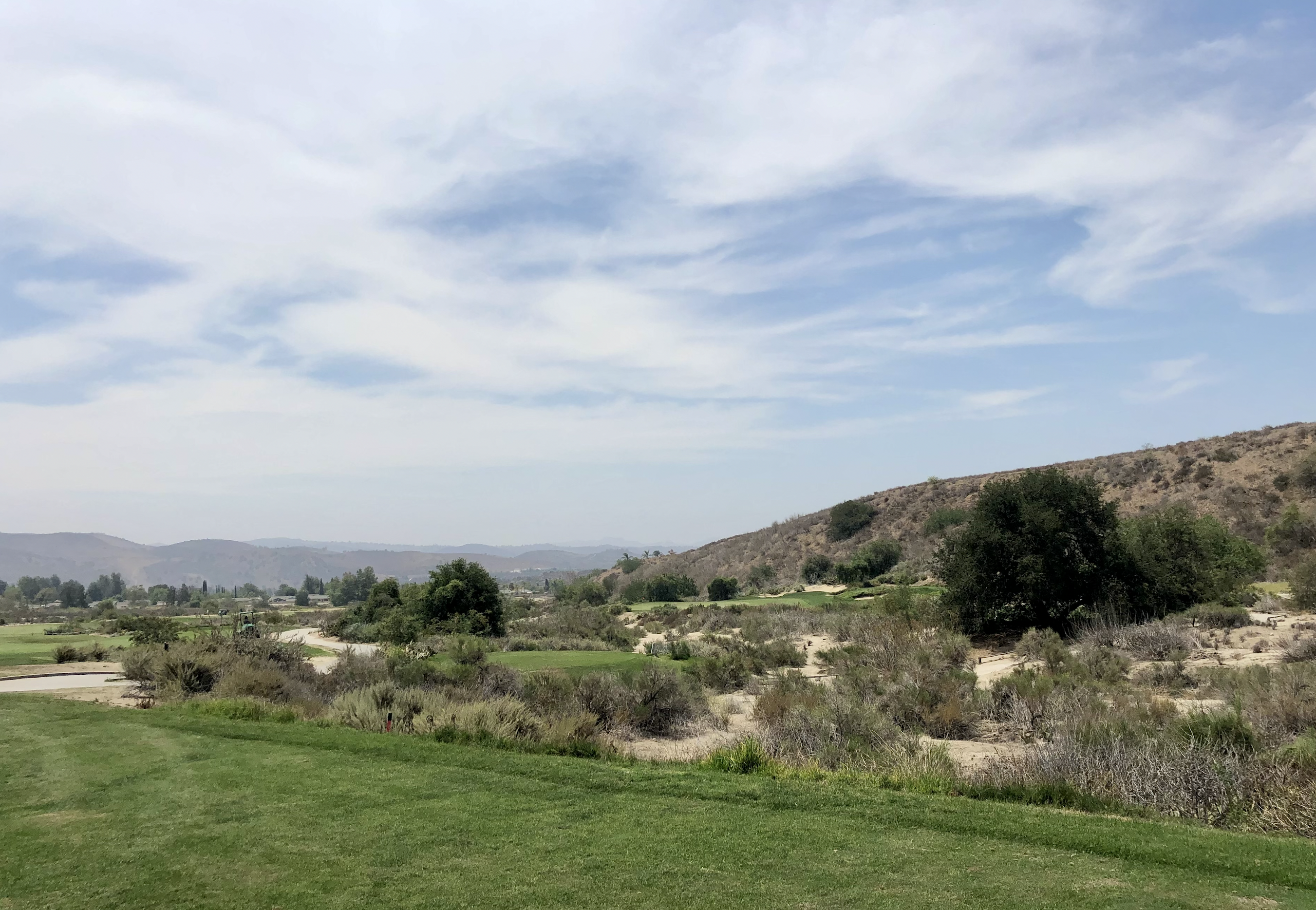
Often golfers become so overwhelmed by standout holes on a course that they lose appreciation for the more subtle ones. This phenomenon often occurs with the opinions of Rustic Canyon.
Golfers often herald the back nine at Rustic, as its routing traverses the more compelling ground at the site. However, the front nine is certainly no pushover and deserves closer study. Indeed, there are few better examples of what intelligent, intricate, and engaging architecture can accomplish on a relatively unassuming piece of land.
The Appetizer
The first hole on any golf course should play a similar role as an opening shot in a film or the first track on an album. Both ought to capture the viewer’s attention and set the tone for the rest of the experience. There should also exist subtle glimpses of what is to come while providing the following holes a chance to build in intensity. The first at Rustic does just this.

An aerial view of the 1st, with the 9th below (courtesy Google Earth images)
A 60-yard wide fairway provides comfort on the tee shot, but skilled players must consider which side they place their aim. A beautifully shaped natural barranca runs up the left and across the front of the green, increasing the difficulty of approach shots from the right side of the fairway. The second shot is just as captivating, as players must consider two options: lay up short of the green and pitch over the barranca or shoot over the barranca in hopes of reaching the green in two. This hole sets the tone for the remainder of the course, encapsulating the natural, gentle, and enticing style of design that soon will follow.
Strategic Design 101
The second continues to ask stimulating strategic questions. There is plenty of space to miss right in the double fairway (with hole five), but players who traverse further away will face difficulties on their second shot. A semi-blind approach and a right-to-left sloping green await those unwilling to challenge the O.B. off the tee. Akin to the first hole, the second is an easy bogey for those who play safe. However, players who challenge the hazards will either be considerably rewarded or punished by the result. Strategic Design 101.
As if there wasn’t enough intrigue in the first two holes, the tee shot on the third poses the most baffling choice yet.
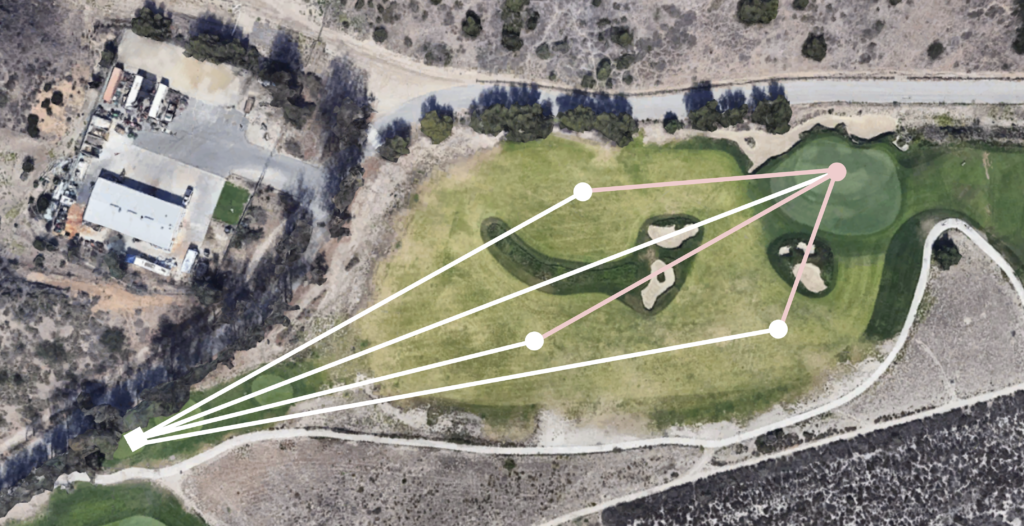
An aerial of the third hole with various strategic options overlaid (courtesy Google Earth images)
Though the third is only about 315 yards from the tips, the deep bunkers and run-off surrounding the green entice the golfer to lay up. However, there are multiple locations to lay up that all offer particular benefits and drawbacks. An iron to the left of the centerline bunkers requires precision to avoid the O.B. left, but the reward is an open approach. Less trouble appears right of the centerline bunkers, but a group of three bunkers (in a Principal’s Nose arrangement) creates a semi-blind approach into a shallow green with deep bunkers behind. For those with the least tolerance for risk, a short iron can take all the hazards out of play off the tee. Nevertheless, their second shot will be further away from the tiny green.
As the routing turns back north towards the clubhouse, the long par-three fourth nestles itself near the dry wash that runs through the center of the course. The green is wild in contour, coupled with the difficulty of a blind tee shot fronted by deception bunkers. An expanse of sand and brush awaits shots that travel too far, giving the advantage to players who stay below the hole.
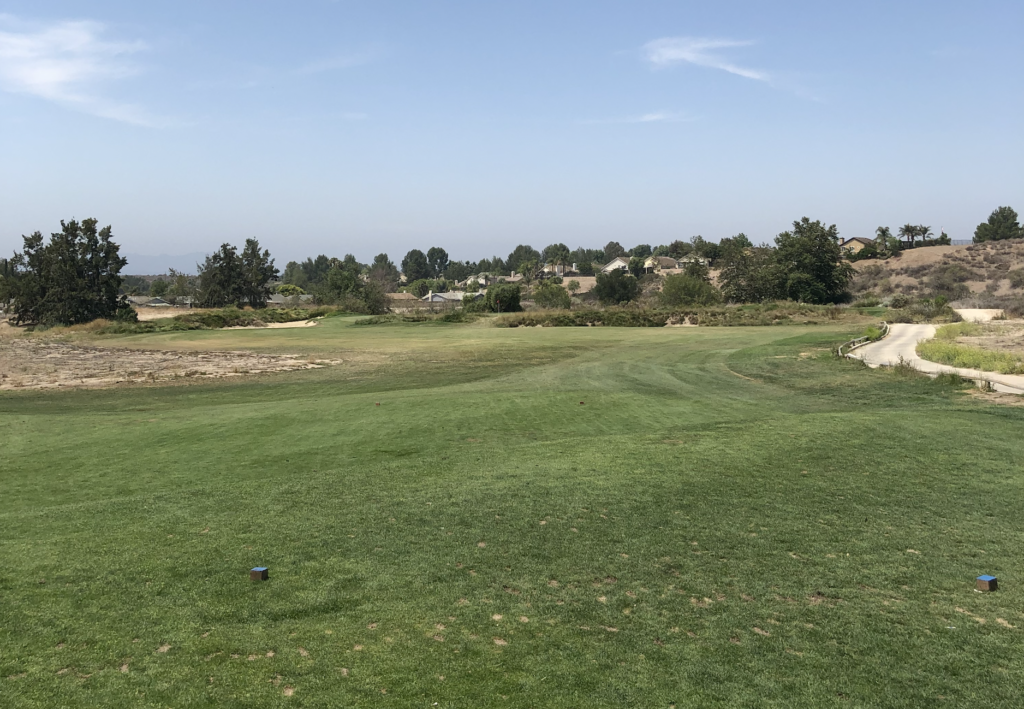
The blind tee shot into the par-three fourth
An Aesthetic Appreciation
The fifth is the first of two holes on the front that feature a split fairway intersected by the wash. The green features a sharp fall-off left of the green, with tightly mowed grass on all sides of the green. This expanse of short grass provides myriad potential options for play. One can putt, chip with a mid-iron, or bank a wedge into the side – the shot-making potential is unlimited!
It is to Rustic’s great benefit that short grass surrounds many other greens throughout the course. Nearly every green features an enveloping fairway maintained at a similar height and firmness as the green. Though Rustic Canyon is not a “true links” golf course, these run-off areas imitate many of the conditions found overseas, forcing golfers to imagine and execute unusual and atypical shots.
The Switch in the Routing
Like the back, the holes on the front run out and back between two shrub-covered hills, bisected by the dry wash. Two holes share a fairway, and the others run parallel.
As the routing turns at the fourth hole and moves back north, the fifth hole proceeds to cross back over the dry wash. This crossing allows the sixth to reverse direction and play into the hillside.
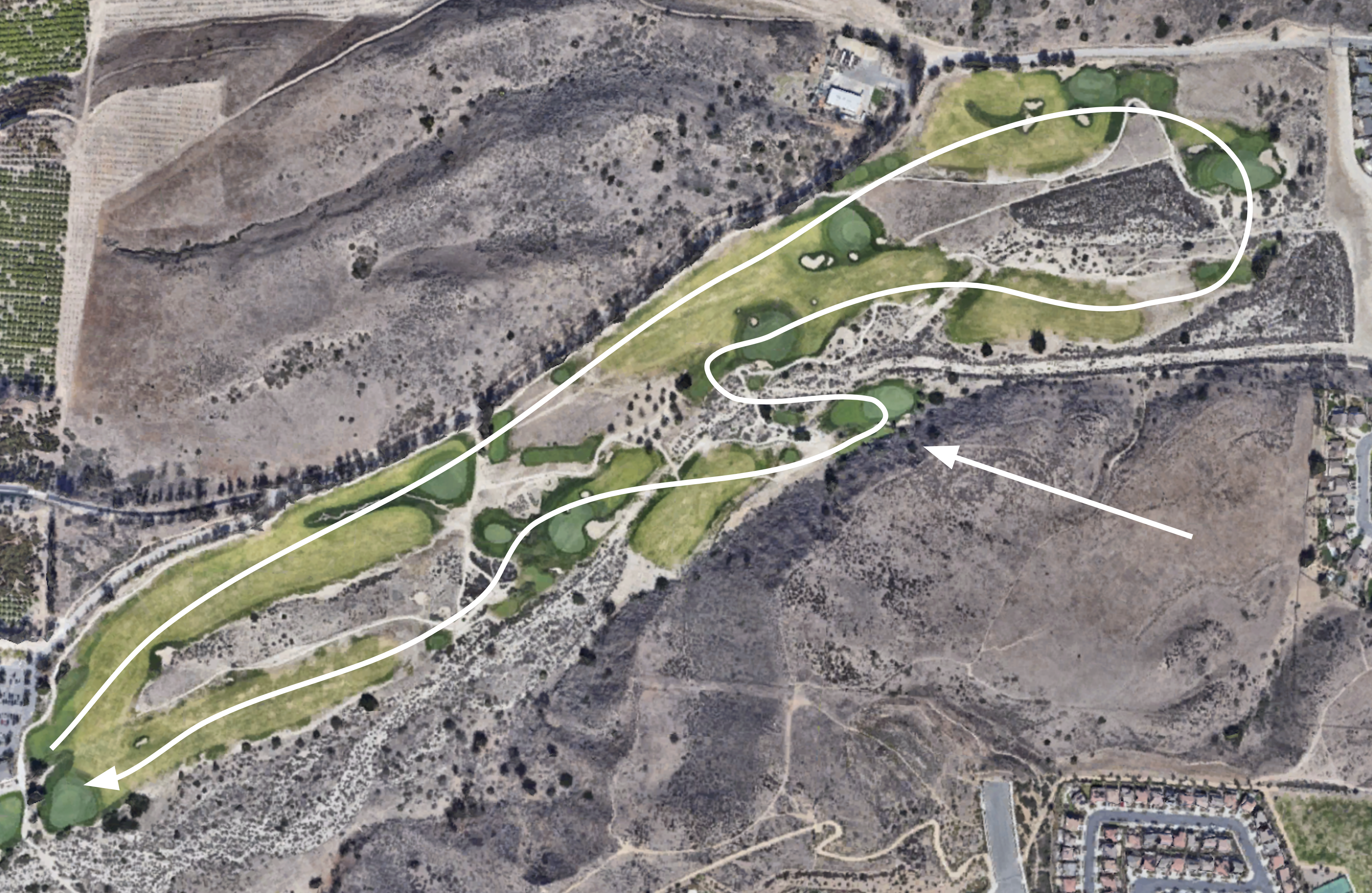
The turn in the routing at the sixth delivers an exciting change of pace (courtesy Google Earth images)
The resulting interest from the switch in direction is coupled with a brilliant green complex at the sixth hole. Featuring a pseudo-biarritz-redan design, the green encourages run-up shots to traverse the gully in front of the green and then fall to pin positions on the left. Hanse and Shackelford deserve high praise for implementing this natural swale with such beauty and interest!
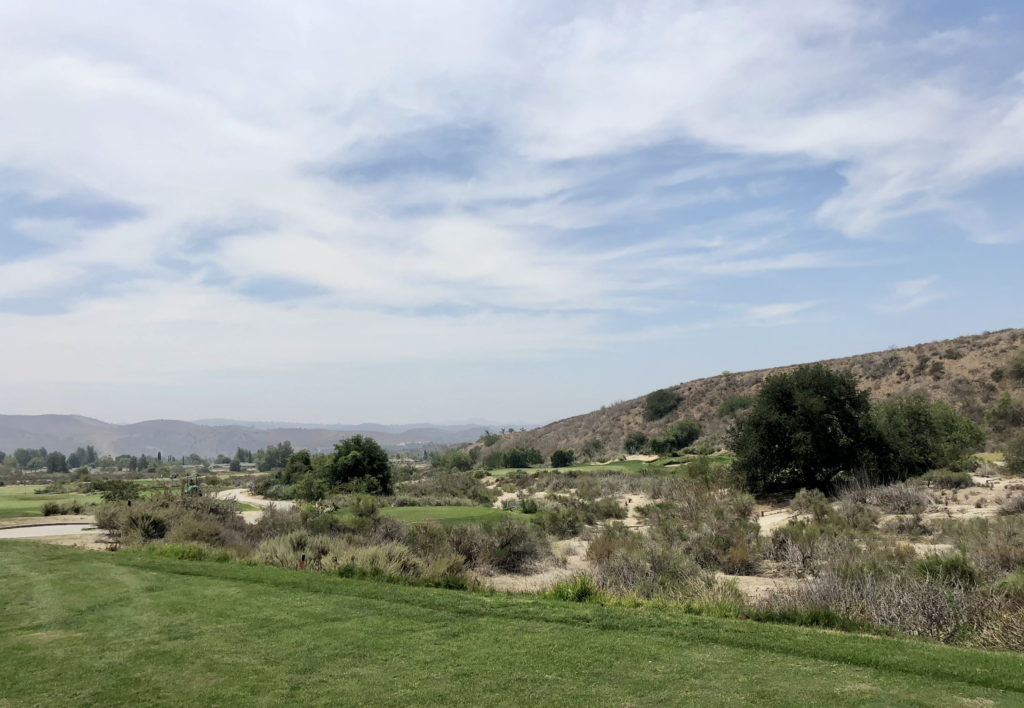
The view from the 6th tee
The swale fronting the 6th green
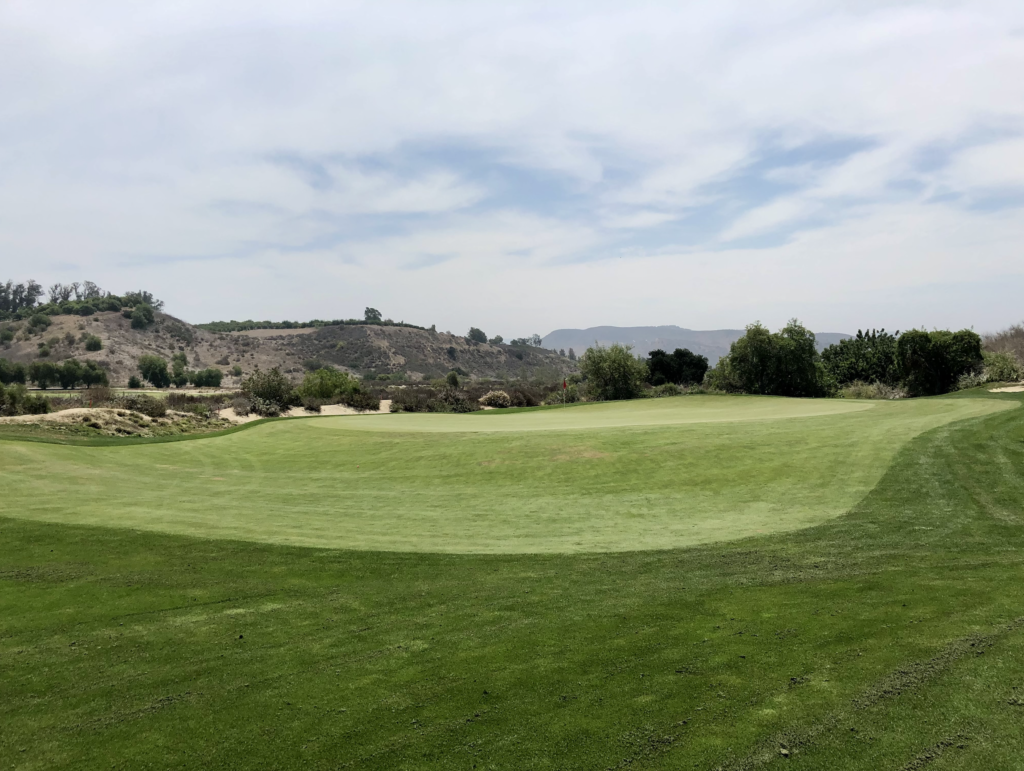
A Riveting Return
Whereas the fifth forces players to cross the dry wash on their second shot, the par-four seventh provides long-hitters a chance to carry the wash on their drive to set up an easier approach. For those who lack the initial bravery, fairway is provided short of the dry wash to lay up. Nevertheless, golfers must encounter resistance from the hole at some point, as those who lay up must tackle an approach over a greenside bunker to a green with runoff and a bunker behind. The principle of delayed penalty strikes again — either take on the challenge at first or push it off until later.
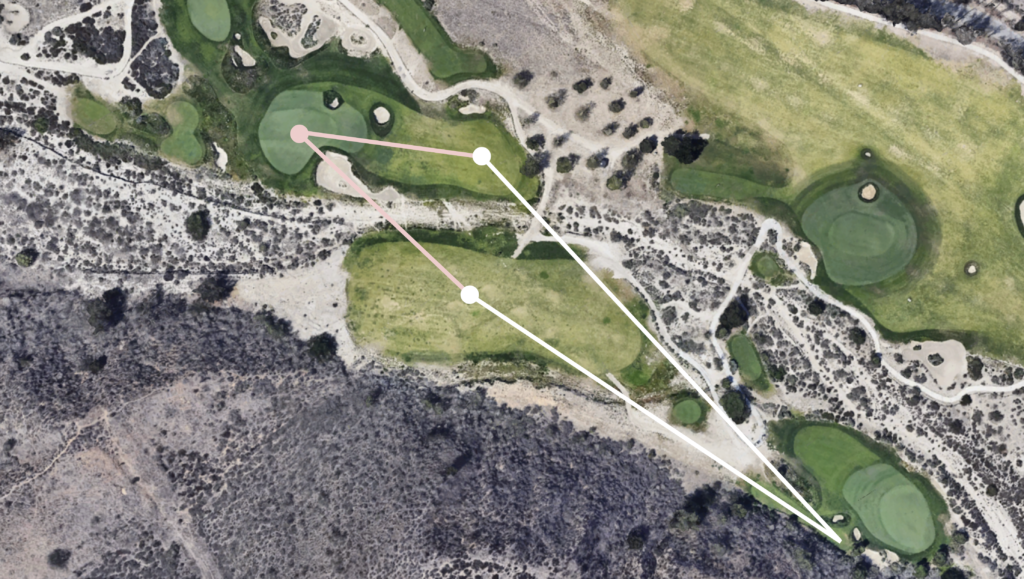
An aerial view of the seventh hole, overlaid with various strategic options (courtesy Google Images)
The penultimate hole of the front nine is a superb short par-3, and it offers one of the most thrilling shots on the course. The dramatic internal green contours force skilled players to consider where to place their tee shot within the green. Meanwhile, high handicappers will relish the challenge of covering the sandy landscape and holding the green. Not only does the hole provide strategic interest for all players in this manner, but it is visually just as captivating. According to Geoff Shackelford, this green site required the most earthwork of all the greens on the course. Despite the heavy earthwork, the intimidating built-up green blends beautifully with its surroundings, as it ties the higher ground right seamlessly into the green contouring. It is difficult to tell that so much machinery and work was required to construct this green!
The imposing short par-three eighth
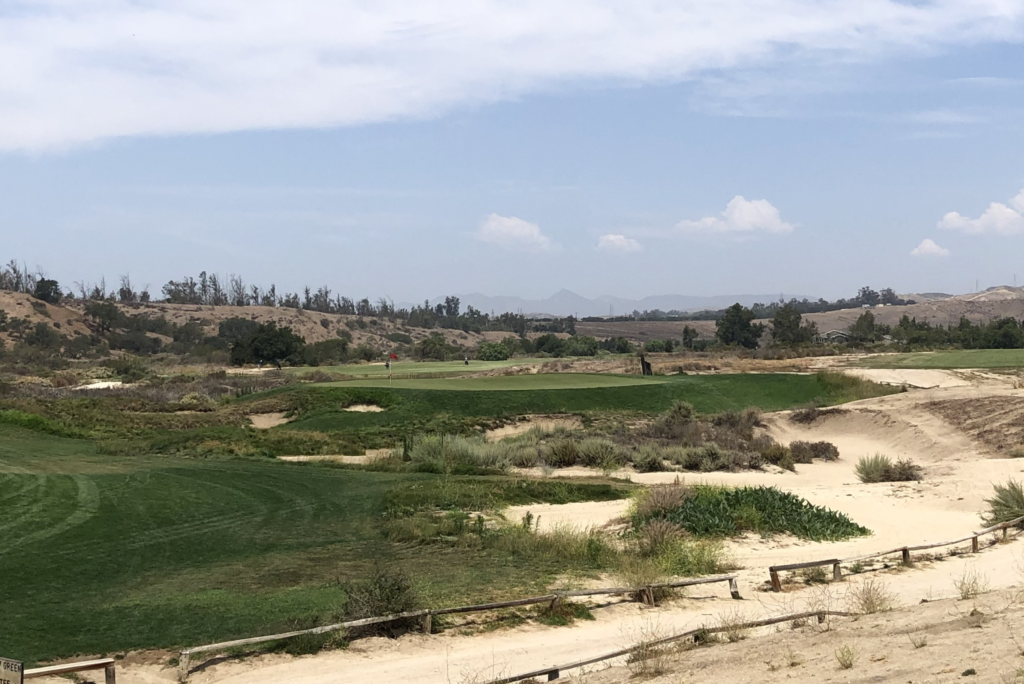
After the third par-three on the nine concludes, the long ninth returns to the clubhouse in a pleasant fashion. Though the tee shot is narrow, the second shot provides fascinating options dependent on the day’s pin location. As detailed in the drawing below, players must consider where to leave their second shot while navigating the covert “trench” bunker. This par-five winds through the native areas and incorporates preexisting native features into the design. This is witnessed most notably in the large slope in the front portion of the green.
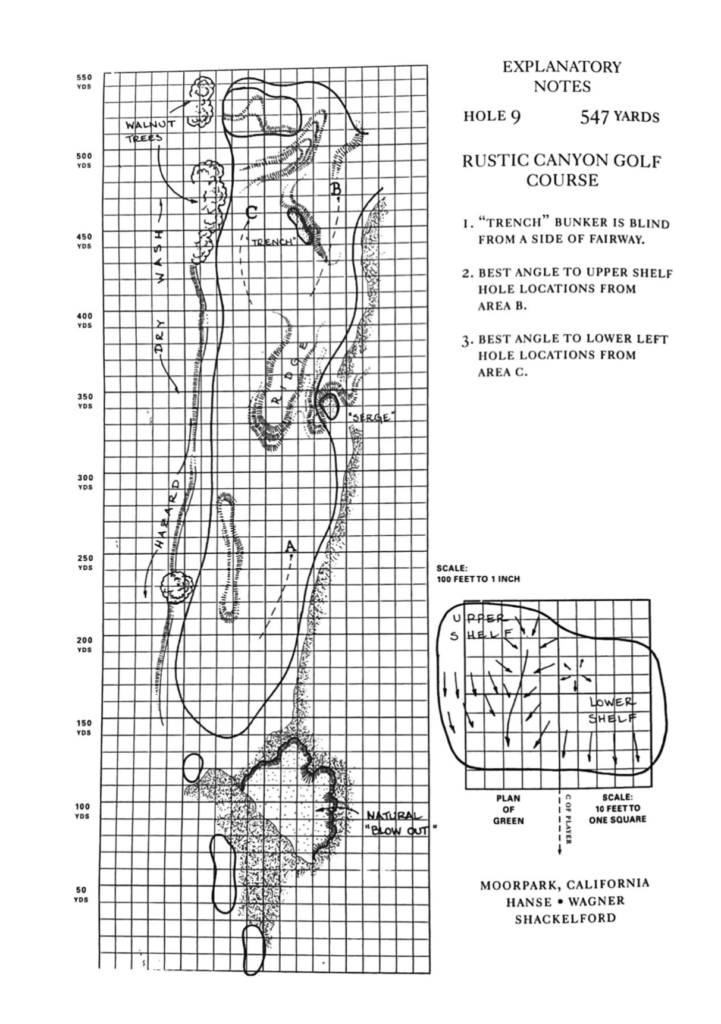
A drawing of the ninth by Gil Hanse from Geoff Shackelford’s book, Grounds for Golf (2003)
From start to finish, the front nine at Rustic is an enthralling stretch of holes. One might not perceive its excellence immediately upon play, but when revisited closely in reflection, it is difficult not to be captivated by each hole! Of course, the front nine is not as dramatic as many other top-tier courses in America; however, drama is not required for excitement. Though the canvas at Rustic was arguably less intriguing than the landscape of other courses, Hanse and Shackelford still capitalized on the few intricate land movements that graced the property.
Oftentimes, it is simply the subtle secrets and modest reservations that make a masterpiece.
Concluding Thoughts on “Value”
Many have written about the incredible value of playing a round at Rustic Canyon. However, the hype surrounding a “hidden gem” is often first based upon the price of the course, and then the good architecture that happens to follow. This order matters, for the architectural merits of these “value” courses tend to merely serve as icing on the cake, instead of the cake itself.
But let it be known that Rustic Canyon is a world-class course in its own right, showcasing one of the most phenomenal public tracks in all of America. When considering Rustic’s merits, the architecture should be placed front and center. Then, one might appreciate the true icing on the cake: a mere $50 green fee!